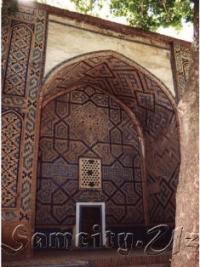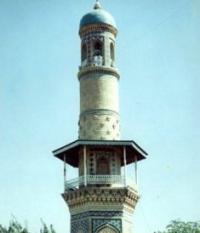Вы здесь
Abdi-Darun mausoleum.


Tours on monuments of Middle Asia.
“The universe contains many planets which make it what it is – a unified system. In addition, our bodies contain many organs, and each part is congruent to a planet in our solar system. The universe we see out our eyes is a mirror of what is within us. This is what God meant by making man in his image. We are all made as a reflection of God and that reflection of him is within us. Furthermore, not only are all religions connected to the same Truth, or Cosmic Heart, but this concept is also mirrored in the pantheons of ancient religions, where each of the many gods simply represented one set of characteristics of the ONE. And in all cases, these many gods symbolized the planets, therefore mimicking the different parts of the universe and the ONE God’s many mirrors (He Who is All). The structure behind all polytheistic religions of the past and present is one and the same. They are all built on the same foundation as Nature”
Suzy Kassem.
Photo Gallery about Uzbekistan.
Abdi-Birun or "Abdi-outer" - the impressive mausoleum of the XVII century, constructed by Bukhara dignitary Nadir Divan-beghi. The word “outer” meant beyond the city wall of the Temurid epoch.
It is regarded as mazar of Islamic lawyer Khodja Abdi (Abdi-Birun) from the family of Caliph Usman of the Arab clan Abdi. According to the legends, Khodja Abdi was one of the first Islamic preachers in Samarkand, alongside with Kusam ibn Abbas.
The mausoleum is located 10 km to the south from Samarkand in Qavchinon mahalla. The mausoleum has a massive basis crowned with the dome on the heavy drum. The front façade is accented by the portal and the rest are decorated by wall arches in rectangular frames.
Ornaments from glazed bricks form simple ghirikhs on the portal and the inscription in Sulth style decorates the drum. Compositionally, the building resembles the side structures of Bibi-Khanym mosque. The memorial complex includes khanaka.
Among villas and orchards uptown, the ancient necropolis is hidden behind pakhsa fences. It developed around the tomb of the Arabian lawyer Khodja Abdal-Maz ad-Din (died in 861) from the Arab clan Abdi. In the IX century, Khodja Abdal-Maz ad-Din was Samarkand qazi.
The basis of his mausoleum with a tent-shaped dome can be related to the XII century. Construction of the first mausoleum is connected with Samarkand Qarakhanids and sultan Sandjar.
At the first half of the XV century, in days of Ulugbeg, the mausoleum was added by ziaratkhana looking on the yard with ancient hauz. Ghirikhs and inscriptions from glazed bricks decorate the portal and drum of the external dome.
On the cylindric drum of the lost external dome, there are fragments of some inscription in Sulth. At two edges of the yard, on ancient basements there are structures of 1908 - 1909, built by Samarkand masters Abdukadir-Khodja, Siddik, Abduzahid, Abdugani and Hasan-khan.
The mosque walls are decorated by carved ganch with floral motifs on painted background. The ceiling exposes paintings in Samarkand style. The gates, from which the fenced path leads to the necropolis, were installed at the same time.
The mausoleum is surrounded by family dahmas of the XV century, coated by hewn and glazed bricks. At the adjoining cemetery there are marble gravestones of the XV - XVII centuries with epigraphic and stylized floral carving.
Authority:
Alexey Arapov. Samarkand. Masterpieces of Central Asia. Tashkent, Sanat. 2004.
Photos
Alexey Arapov and samcity.uz







